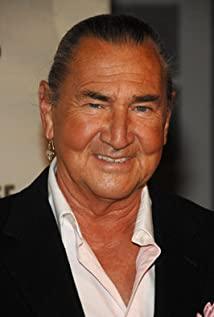The following content is from Baidu:
"Minus Octave" is a remake of Japan's amazing work "Antarctic Story" in 1983. This Antarctic adventure film adapted from a real story caused a great sensation when it was released in Japan, except for the spectacular Antarctic ice and snow world in the film. , and the thrilling escape scene, the complex expression of human nature in the face of danger is deeply touching and memorable. "Antarctic Story" is based on a real historical event that took place in Japan in 1957. The real situation is that 8 of the 15 dogs left behind broke free of their chains, and in the end only 2 dogs named Taro and Jiro survived. The beginning of the story Starting from November 1957, in order to participate in the International Year of Observation held in Antarctica the following year, the Japanese observation team formed the first Antarctic wintering team and boarded the Antarctic observation ship "Songya" at the Harumi Pier in Tokyo Bay. ” to the destination. In addition to the eleven team members who boarded the "Songya", there were also fifteen Kata dogs used as sled dogs, including brothers taro (Taro), Jiro (Jiro) and their father kuma (bear). ) included. The team members Kikuchi and Kitagawa are responsible for taking care of the dogs and training them to assist the construction of the Japanese observation team in the Showa base. However, in the winter of the following year when the first team's mission ended and the second team took over, due to drift ice and bad weather, the "Songya" carrying the second team was unable to approach the Showa base. The second team therefore announced the suspension of the observation activity, and rescued the eleven members with the helicopter on the "Songya". Because of the fuel, the fifteen dogs were chained in place, leaving a week's worth of food with the first team, and they were abandoned in the cold Antarctic like this. Beichuan, who is now an honorary professor at Kyushu Island University, recalled: At that time, he thought he could return to the Showa base, so he locked the dog in place, but he did not expect the weather to continue to be bad, and due to various reasons for the "Songya" fuel, The observation team announced the withdrawal of the Antarctic. The announcement of the retreat was quite shocking to Kikuchi and Kitagawa, who spent time with the dogs every day. Kikuchi was even more excited to take out potassium hydrogenate (poison), saying that instead of leaving them in the Antarctic, it is better to let them rest early. But it turned out that only the team members returned to Japan, and the fifteen dogs were left at the Showa base like this. Greeted by their families, the observation team returned to Japan, but what awaited them were accusations from conservation groups and the public. The team members received many letters and phone calls protesting the inhumane behavior of the observation team for abandoning the dogs who were assisting humans in the icy, food-starved Antarctic continent. Beichuan recalled that he didn't know how to live that year, not only because of the people scolding, thinking of all the memories of getting along with the dogs, his conscience has been condemned. Beichuan soon entered the research institute of Kyoto University and got engaged, and his mood gradually calmed down. At this time, the news of the recruitment of the three-time team members was released, and Beichuan told his fiancee that he would go to the Antarctic again because he wanted to bury the dogs with his own hands. On January 14, 1959, the helicopter carrying the third wintering team approached the Showa base. At this moment, the team members saw signs of biological activity at the Showa Base from above! Yes, the dog is still alive! After getting off the helicopter, what Beichuan saw were brothers Taro and Jiro. They were not only very energetic but also walked towards him! Why can taro and jiro survive in the harsh Antarctic continent? This is a puzzling question. It is speculated that the eight young dogs, including brothers Taro and Jiro, broke free from the chains and left when humans did not return to the Showa base for a long time and ran out of food. And the seven old dogs, including Kuma, died because of their old age. ] The dogs who broke free of the chains did not eat the food left by humans in the Showa base. They probably lived by hunting penguins and eating seal dung. Even so, how taro and jiro survive the Antarctic winter without food is still a mystery. The cold tolerance limit of northern dogs is one month, but there are three months of food shortage in Antarctic winter. In addition, why taro and jiro still stay at the Showa base is also a thought-provoking question. It is speculated that because taro and jiro came to the Showa base when they were less than one year old, they have a strong sense of belonging to the base, so they always Unwilling to leave the miraculous survival of taro and jiro, the Japanese people were not only surprised but also moved. In September of the same year, the Japan Society for the Protection of Animals erected a commemorative bronze statue of the 15 Katai Inu working at the Showa Base under the Tokyo Tower, as a symbol of animal protection. The story of taro and jiro was made into the movie "Antarctic Story", and the movie star Ken Takakura played the role of Kikuchi, who was responsible for taking care of the dogs. The fairy tale writer Issey Fujiwara also wrote the story of taro and jiro into a novel "Taro, Jiro is still alive!" Taro and Jiro continued to assist in the activities of the observation team, and in July 1960, during the fifth wintering team's activities, Ji Ro passed away, and the remains were taxidermied and displayed at the National Science Museum in Ueno, together with the Akita dog Hachiko, who was famous every day waiting for his owner at Shibuya Station. taro also returned to Japan after He spent the rest of his life on the campus of Hokkaido University, and died at the age of fifteen in 1970. Specimens of his remains are displayed in the Museum of the Faculty of Agriculture, Hokkaido University. (Tokyo) The above is what I know. I have also seen that movie. It was pretty good. In the movie, 6 dogs survived after the group, but the real incident is that only 2 survived, and the background is also different. Different, one is a true story that takes place in Japan, while the film is set in the American social context.
View more about Eight Below reviews











